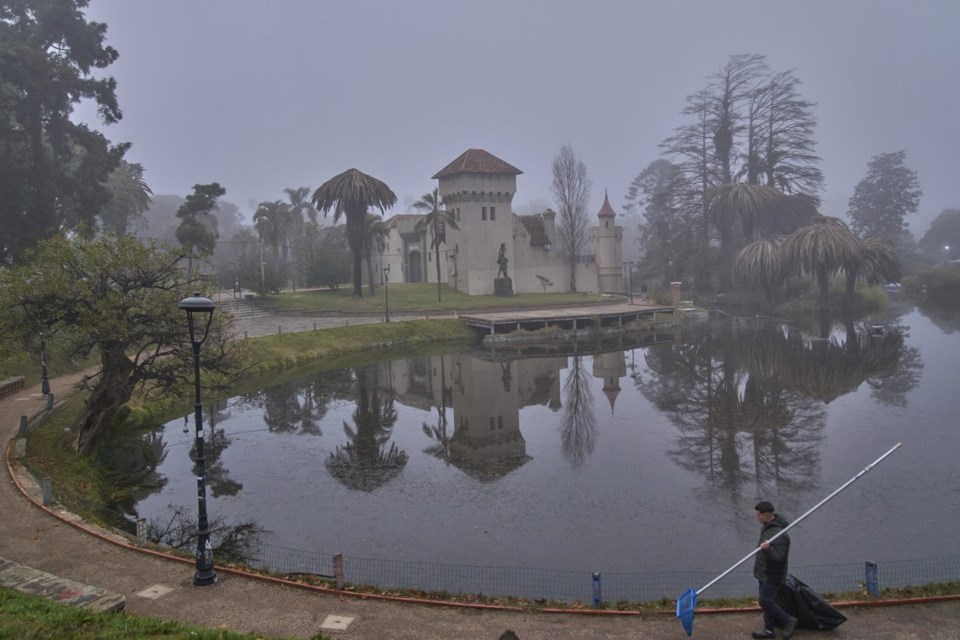MONTEVIDEO, Uruguay (AP) — Palm trees in Uruguay are more than just plants, they are icons, much like olive groves for Greeks or cherry blossoms for the Japanese.
The treasured trees lining one of the world’s longest sidewalks through Montevideo, Uruguay’s capital, and adorn the swanky Atlantic beach resorts of Punta del Este have recently come under ruthless attack.
Across the small South American country, palm trees are falling prey to a fierce enemy measuring just 5 centimetres (2 inches) in length: The red palm weevil.
First the elegant fronds droop. Then the tell-tale holes appear in the trunk. Soon enough, the tree is tilting toward collapse.
The weevil has devoured thousands of Uruguay’s palm trees since its unexplained arrival from Southeast Asia in 2022. But authorities are only now waking up to the threat as the landscape of municipalities transforms and fears grow that the country's beloved palms could be wiped out.
“We are late in addressing this,” Estela Delgado, the national director of biodiversity at Uruguay's Ministry of Environment, acknowledged last month. “But we are doing so with great commitment and seriousness.”
The insect and its devastating impact can be found in 60 countries around the world but nowhere else in South America. Authorities first detected it in the town of Canelones, bordering Montevideo, where the insect killed more than 2,000 palm trees in less than a month.
Weevils quietly wreak destruction by boring through the open scars of pruned palms and laying hundreds of eggs inside. When larvae hatch, they tunnel through trunks and eat up the trees’ internal tissue. Death strikes within weeks.
The Uruguayan government set up a task force to combat the plague in March. In May, Environment Minister Edgardo Ortuño declared the fight against the red palm weevil “a national priority."
As of this year, the red bug has proliferated in eight of the country's 19 regions, including Montevideo. Half of the capital's 19,000 palm trees have been infected, estimates Gerardo Grinvald, director of pest control company Equitec, which helps authorities combat the bug.
The insect first attacks decorative Canary palms, the tree in so many pictures of Uruguay’s sunny landscape, before moving onto its date palms.
“It’s an invisible pest,” Grinvald said, explaining the challenge of identifying an infestation when it starts. As a result, landowners fail to isolate and quarantine their trees, fueling the weevil's crawl across the country.
The Montevideo municipality this year earmarked $70,000 for chemical pesticide sprays and insecticide injections meant to kill bugs inside infested trunks, with the goal of saving some 850 trees in the city’s prominent Parque Rodó, a scenic urban park along the coast.
In the southeast corner of Uruguay, home to Punta del Este, a beachy, palm-fringed haven for jet-set elites from all over the world, authorities recently allocated $625,000 for efforts to dispose of infected trees and lure weevils away from affected areas with pheromone traps and other methods.
“We are losing our palm trees,” lamented Montevideo resident Rafael dos Santos as he walked his dog in Parque Rodó. “They are historic in Uruguay, and a part of us.”
As the weevil's march continues unabated, authorities now fear native trees of Uruguay's UNESCO biosphere reserve bordering Brazil will fall victim next, potentially facilitating the spread of the parasite across an unprepared continent.
___
Follow AP’s coverage of Latin America and the Caribbean at https://apnews.com/hub/latin-america.
Matilde Campodónico And Nayara Batschke, The Associated Press




